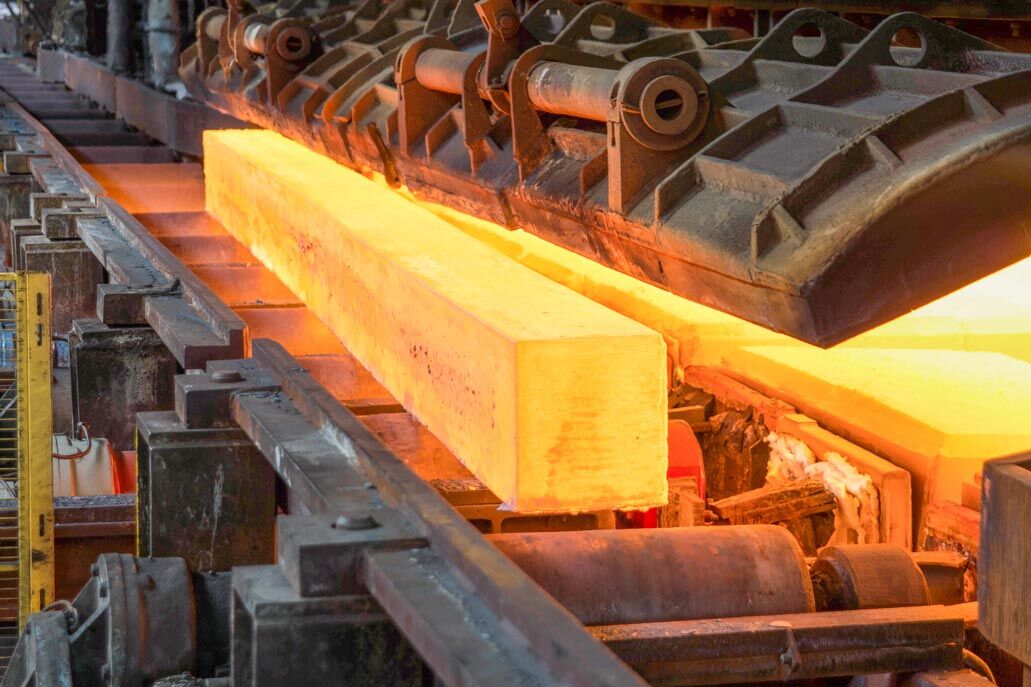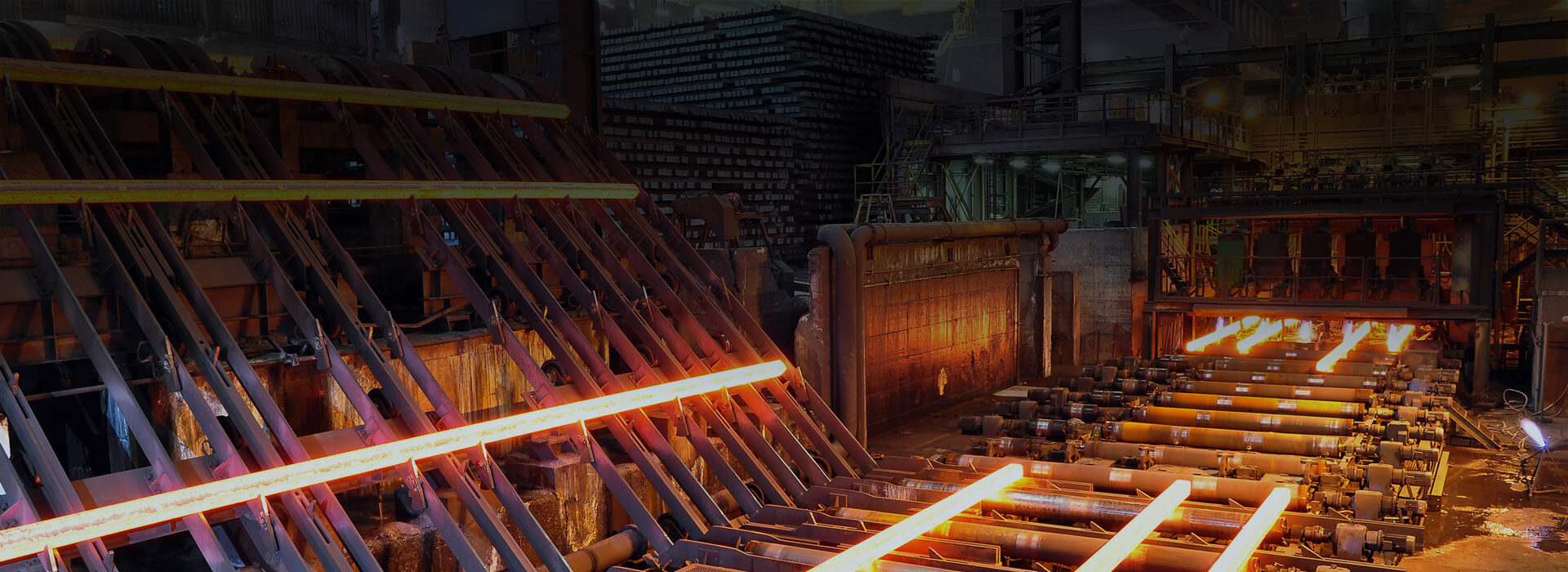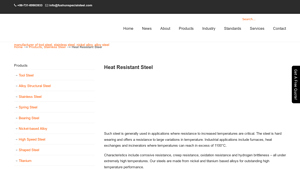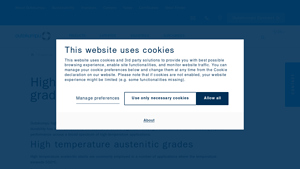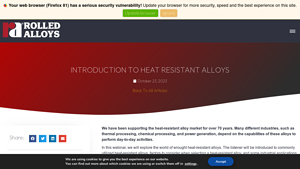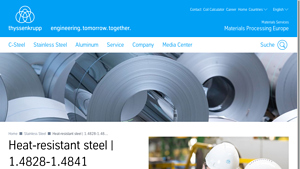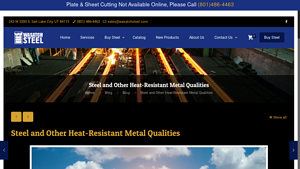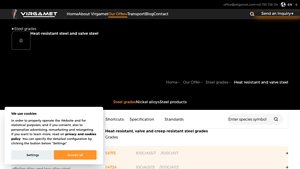Heat-Resistant Steel Guide: Type, Cost, Top List…
Introduction: Navigating the Global Market for heat-resistant steel
In today’s competitive industrial landscape, sourcing high-quality heat-resistant steel presents a significant challenge for B2B buyers, especially those in sectors like oil and gas, petrochemicals, and power generation. The demand for materials capable of withstanding extreme temperatures—often exceeding 1100°C—makes selecting the right alloy not only a technical decision but a crucial aspect of operational efficiency and safety. This comprehensive guide delves into the intricacies of heat-resistant steel, covering various types, their specific applications, and essential considerations for supplier vetting.
As international buyers from Africa, South America, the Middle East, and Europe navigate the complexities of sourcing heat-resistant steel, understanding the nuances of material properties, such as corrosion resistance and creep resistance, becomes imperative. This guide empowers decision-makers by providing insights into the key characteristics of different steel grades, cost factors, and best practices for evaluating suppliers. By addressing these critical components, this resource aims to facilitate informed purchasing decisions that align with both operational needs and budgetary constraints.
Equipped with actionable insights and a thorough understanding of the global market landscape, B2B buyers can confidently engage with suppliers, ensuring that their projects are supported by reliable, high-performance materials that meet stringent industrial standards.
Understanding heat-resistant steel Types and Variations
| Type Name | Key Distinguishing Features | Primary B2B Applications | Brief Pros & Cons for Buyers |
|---|---|---|---|
| Ferritic Heat-Resistant Steel | Good oxidation resistance; lower toughness | Industrial furnaces, steam boilers | Pros: Cost-effective; good for moderate temperatures. Cons: Limited high-temperature performance. |
| Austenitic Heat-Resistant Steel | High creep strength; excellent corrosion resistance | Petrochemical industry, waste incineration plants | Pros: Superior mechanical properties; versatile applications. Cons: Higher cost compared to ferritic types. |
| Chrome Molybdenum Steel | Enhanced tensile strength; excellent corrosion resistance | Oil and gas, nuclear power industries | Pros: High temperature and corrosion resistance; reliable. Cons: Requires careful handling due to brittleness at low temperatures. |
| Nickel-Based Superalloys | Exceptional heat resistance; melting points up to 2,470°C | Aerospace, power generation | Pros: Outstanding performance in extreme conditions. Cons: Very high cost; overkill for many applications. |
| Martensitic Heat-Resistant Steel | High strength; good resistance to thermal fatigue | Turbines, high-stress environments | Pros: Excellent strength retention; suitable for high-stress applications. Cons: Less corrosion resistance compared to austenitic grades. |
What are the Characteristics of Ferritic Heat-Resistant Steel?
Ferritic heat-resistant steel is characterized by its good oxidation resistance and lower toughness compared to other types. Typically, it can withstand temperatures up to 950°C, making it suitable for applications like industrial furnaces and steam boilers. For B2B buyers, this type offers a cost-effective solution for moderate temperature environments, although its performance diminishes at higher temperatures, which may require consideration for long-term applications.
How Does Austenitic Heat-Resistant Steel Compare?
Austenitic heat-resistant steel is known for its high creep strength and excellent corrosion resistance, withstanding temperatures up to 1150°C. This type is extensively used in the petrochemical industry and waste incineration plants. Buyers should note that while austenitic steels provide superior mechanical properties and versatility, they come at a higher cost, which may impact budget considerations for large-scale projects.
Why Choose Chrome Molybdenum Steel for Your Operations?
Chrome molybdenum steel stands out due to its enhanced tensile strength and excellent corrosion resistance, making it ideal for high-temperature applications in the oil and gas and nuclear power sectors. While it offers reliable performance, buyers must be cautious, as it can become brittle at low temperatures. Its ability to perform under extreme conditions makes it a favored choice, despite requiring careful handling.
What Advantages Do Nickel-Based Superalloys Offer?
Nickel-based superalloys are exceptional for extreme heat applications, with melting points reaching as high as 2,470°C. They are primarily used in aerospace and power generation due to their unparalleled heat resistance and mechanical stability. However, buyers should be aware of the significantly higher costs associated with these alloys, which may not be justifiable for less demanding applications.
When is Martensitic Heat-Resistant Steel the Right Choice?
Martensitic heat-resistant steel is recognized for its high strength and good resistance to thermal fatigue, making it suitable for turbines and high-stress environments. While it retains excellent strength retention, its corrosion resistance is less than that of austenitic grades. B2B buyers looking for materials that can withstand high-stress applications should consider martensitic steel, balancing performance with cost-effectiveness.
Key Industrial Applications of heat-resistant steel
| Industry/Sector | Specific Application of heat-resistant steel | Value/Benefit for the Business | Key Sourcing Considerations for this Application |
|---|---|---|---|
| Oil & Gas | Components for drilling rigs and pipelines | Enhanced operational efficiency and safety under extreme conditions | Availability of certified grades, compliance with international standards (e.g., ASTM, ISO) |
| Power Generation | Boiler tubes and heat exchangers | Improved energy efficiency and reduced maintenance costs | Sourcing from reputable manufacturers with proven track records |
| Petrochemical Refining | Reactor vessels and piping systems | Increased durability and resistance to corrosive environments | Material certification and traceability, especially for high-stress applications |
| Aerospace | Engine components and exhaust systems | Lightweight yet strong materials that withstand high temperatures | Compliance with aerospace standards and rigorous testing protocols |
| Waste Management | Incinerator components and thermal treatment plants | Enhanced safety and longevity in high-temperature environments | Supplier reliability and experience in high-temperature applications |
How is heat-resistant steel utilized in the oil and gas industry?
In the oil and gas sector, heat-resistant steel is critical for manufacturing components that endure extreme temperatures and pressures, such as drilling rigs and pipelines. These materials enhance operational efficiency and safety by preventing failures that could lead to costly downtimes or hazardous spills. Buyers in this industry should prioritize sourcing certified grades that comply with international standards like ASTM and ISO to ensure reliability and performance under demanding conditions.
What are the applications of heat-resistant steel in power generation?
Heat-resistant steel is extensively used in power generation, particularly for boiler tubes and heat exchangers. These components must withstand high temperatures and corrosive environments to maximize energy efficiency and minimize maintenance costs. International buyers should focus on suppliers with a proven track record of delivering high-quality materials that meet stringent industry standards, as this will directly impact the longevity and reliability of their power generation systems.
How does the petrochemical industry benefit from heat-resistant steel?
In the petrochemical refining industry, heat-resistant steel is essential for constructing reactor vessels and piping systems that operate under high temperatures and corrosive conditions. This material significantly increases durability, reducing the risk of leaks or catastrophic failures that can arise from thermal fatigue or corrosion. Buyers should ensure that their suppliers provide material certification and traceability to guarantee the integrity of the components used in these critical applications.
Why is heat-resistant steel important in the aerospace sector?
Aerospace applications require heat-resistant steel for engine components and exhaust systems that must perform under extreme thermal conditions while remaining lightweight. The use of such materials enhances safety and performance, contributing to overall aircraft efficiency. Buyers in this sector need to prioritize suppliers who comply with aerospace standards and rigorous testing protocols to ensure that their materials can withstand the demanding requirements of flight operations.
How is heat-resistant steel used in waste management?
In waste management, heat-resistant steel is utilized in incinerator components and thermal treatment plants, where materials are exposed to extremely high temperatures. The durability and corrosion resistance of heat-resistant steel enhance safety and operational longevity in these environments. When sourcing materials, buyers should consider supplier reliability and their experience with high-temperature applications to ensure that they receive products capable of withstanding the rigors of waste processing.
3 Common User Pain Points for ‘heat-resistant steel’ & Their Solutions
Scenario 1: Overcoming Material Degradation in High-Temperature Applications
The Problem:
B2B buyers in industries such as petrochemical refining and energy production often face significant challenges with material degradation in high-temperature environments. These environments can reach temperatures exceeding 1100°C, leading to issues like thermal fatigue, oxidation, and creep. Buyers must ensure that the materials they procure can withstand such harsh conditions without compromising structural integrity. If the wrong grade of heat-resistant steel is used, it can lead to catastrophic failures, increased downtime, and costly repairs, ultimately affecting production schedules and safety.
The Solution:
To combat material degradation, buyers should prioritize sourcing high-quality heat-resistant steel that meets specific application requirements. It’s crucial to select alloys with a proven track record in similar conditions, such as nickel-based superalloys or Chrome Moly steels, which offer excellent corrosion and oxidation resistance. Engaging with reputable suppliers who provide comprehensive specifications and certifications is essential. Furthermore, buyers should invest in thorough testing and validation processes, including stress tests at operating temperatures, to ensure that the steel can endure the expected thermal and mechanical stresses.
Scenario 2: Navigating Complex Sourcing and Supply Chain Issues
The Problem:
International buyers often encounter complexities in sourcing heat-resistant steel due to varying global standards and regulations. Factors such as compliance with ASTM, ISO, or EN standards, alongside logistical challenges, can complicate procurement processes. This can lead to delays in project timelines and increased costs, especially when suppliers fail to deliver materials that meet the required specifications or when there are unexpected tariffs and shipping issues.
The Solution:
To streamline sourcing, buyers should establish strong partnerships with suppliers who have a solid understanding of international trade regulations and compliance standards. It’s advisable to create a comprehensive sourcing strategy that includes multiple suppliers across different regions to mitigate risks associated with supply chain disruptions. Additionally, buyers should leverage technology, such as supply chain management software, to track orders, monitor inventory levels, and forecast demand accurately. Regular communication with suppliers about lead times and potential challenges can also enhance transparency and responsiveness in the procurement process.
Scenario 3: Ensuring Proper Fabrication and Handling Techniques
The Problem:
Fabrication and handling of heat-resistant steel can pose unique challenges, especially when dealing with high-strength materials that require specific techniques to avoid damage. Improper handling or machining can lead to microstructural changes, reducing the material’s performance under high temperatures. Buyers often face difficulties in ensuring that their fabrication partners have the necessary expertise and equipment to work with these specialized steels.
The Solution:
To address fabrication concerns, buyers should conduct due diligence when selecting fabrication partners. This includes evaluating their experience with heat-resistant steel and their familiarity with advanced machining techniques. It is beneficial to provide clear specifications and guidelines for handling and processing the material, including recommended temperatures for welding and cutting. Additionally, buyers should consider incorporating quality control measures, such as third-party inspections, to ensure that the fabrication process adheres to industry best practices. Training sessions for fabrication staff on the unique properties of heat-resistant steel can further enhance the quality and reliability of the final products.
Strategic Material Selection Guide for heat-resistant steel
What Are the Key Properties of Heat-Resistant Steel Materials?
Heat-resistant steel is essential for applications that encounter extreme temperatures and corrosive environments. Below are analyses of four common materials used in heat-resistant steel, focusing on their properties, advantages, disadvantages, and considerations for international B2B buyers.
1. Chrome Molybdenum Steel (Chrome Moly)
Key Properties:
Chrome Moly steel is renowned for its excellent high-temperature strength and corrosion resistance. It can withstand temperatures up to 600°C and is particularly effective in environments with oxidative conditions due to its chromium content.
Pros & Cons:
The durability of Chrome Moly makes it ideal for high-stress applications, particularly in the oil and gas industry. However, its higher cost compared to standard carbon steels can be a barrier for some buyers. Additionally, its manufacturing complexity may require specialized processes, increasing lead times.
Impact on Application:
Chrome Moly is commonly used in pressure vessels, pipelines, and heat exchangers. It is compatible with various media, including hydrocarbons and steam, making it versatile for petrochemical applications.
Considerations for International Buyers:
Buyers from regions like Africa and South America should ensure compliance with international standards such as ASTM A387 and ASME SA387, which are widely recognized. In Europe, particularly Germany, DIN standards are crucial. Understanding local regulations regarding material specifications is also essential.
2. Ferritic Heat-Resistant Steel
Key Properties:
Ferritic steels, such as Wnr. 1.4724, offer good oxidation resistance and can operate effectively at temperatures up to 950°C. They possess a unique microstructure that provides excellent resistance to thermal fatigue.
Pros & Cons:
These steels are generally more cost-effective than austenitic grades and are easier to manufacture. However, they exhibit lower toughness under impact loading, which can be a limitation in certain applications.
Impact on Application:
Ferritic steels are suitable for industrial furnaces and steam boilers. Their compatibility with oxidizing environments makes them ideal for applications involving flue gas and combustion processes.
Considerations for International Buyers:
Compliance with European standards (EN 10028) is critical for buyers in Europe. In regions like the Middle East, understanding the local specifications for heat-resistant materials can facilitate smoother procurement processes.
3. Austenitic Heat-Resistant Steel
Key Properties:
Austenitic steels, such as Wnr. 1.4845, are designed to withstand temperatures up to 1050°C. They offer superior creep resistance and mechanical strength, making them suitable for high-stress environments.
Pros & Cons:
The primary advantage of austenitic steels is their high-temperature performance and resistance to intergranular corrosion. However, they can be more expensive and may require more complex manufacturing processes, which can increase costs and lead times.
Impact on Application:
These steels are ideal for components in chemical and petroleum industries, such as heat exchangers and gas lines. Their ability to withstand corrosive media makes them a preferred choice in harsh environments.
Considerations for International Buyers:
Buyers should be aware of compliance with ASTM and ISO standards, especially in Europe and the Middle East. Understanding the local market’s preferences for specific grades can also enhance procurement strategies.
4. Nickel-Based Superalloys
Key Properties:
Nickel-based superalloys are engineered for extreme heat resistance, with melting points starting at 1200°C. They exhibit excellent mechanical properties under high temperatures and resist thermal fatigue and corrosion.
Pros & Cons:
These materials provide unparalleled performance in high-temperature applications, making them suitable for aerospace and power generation. However, their high cost and complexity in manufacturing can limit their use to specialized applications.
Impact on Application:
Nickel superalloys are commonly used in turbine components and other applications where extreme conditions prevail. Their compatibility with various aggressive media makes them versatile.
Considerations for International Buyers:
Due to their specialized nature, buyers should ensure compliance with rigorous standards such as ASTM and JIS. Understanding the supply chain dynamics and sourcing capabilities in different regions can also impact procurement strategies.
Summary Table of Heat-Resistant Steel Materials
| Material | Typical Use Case for heat-resistant steel | Key Advantage | Key Disadvantage/Limitation | Relative Cost (Low/Med/High) |
|---|---|---|---|---|
| Chrome Molybdenum Steel | Pressure vessels, pipelines | Excellent high-temperature strength | Higher cost, complex manufacturing | High |
| Ferritic Heat-Resistant Steel | Industrial furnaces, steam boilers | Cost-effective, good oxidation resistance | Lower toughness under impact loading | Medium |
| Austenitic Heat-Resistant Steel | Chemical and petroleum components | Superior creep resistance | More expensive, complex manufacturing | High |
| Nickel-Based Superalloys | Turbine components, aerospace applications | Unparalleled heat resistance | High cost, specialized applications | High |
This guide provides a comprehensive overview of heat-resistant steel materials, aiding B2B buyers in making informed decisions tailored to their specific applications and regional requirements.
In-depth Look: Manufacturing Processes and Quality Assurance for heat-resistant steel
What Are the Key Stages in the Manufacturing Process of Heat-Resistant Steel?
The manufacturing of heat-resistant steel involves several critical stages, each essential for ensuring the final product meets the stringent requirements for high-temperature applications. Understanding these stages can help B2B buyers identify suitable suppliers and assess their capabilities.
Material Preparation: How Is Raw Material Selected and Processed?
The first step in the manufacturing process is the selection and preparation of raw materials. Heat-resistant steels are typically composed of various alloys, including nickel, chromium, and molybdenum, which contribute to their high-temperature performance. Suppliers often source raw materials from reputable mills, ensuring compliance with international standards such as ASTM or ISO specifications.
Once selected, the raw materials undergo a series of treatments, including melting in electric arc furnaces (EAF) or induction furnaces, where they are combined to achieve the desired chemical composition. This is followed by refining processes to remove impurities and enhance the alloy’s properties.
What Forming Techniques Are Commonly Used in Heat-Resistant Steel Production?
After material preparation, the next stage involves forming the steel into the desired shapes. This can include processes such as hot rolling, forging, or extrusion. Hot rolling is particularly common, as it allows the steel to be shaped at elevated temperatures, making it easier to manipulate while improving its mechanical properties.
During this phase, manufacturers often use techniques like controlled cooling to manage the microstructure of the steel, ensuring it retains its heat-resistant qualities. For example, specific cooling rates can enhance the steel’s toughness and resistance to thermal fatigue, which is crucial for applications in industries like oil and gas, aerospace, and power generation.
How Is Assembly Conducted for Heat-Resistant Steel Components?
In cases where heat-resistant steel is part of a larger assembly, such as in industrial furnaces or heat exchangers, the assembly process must be meticulously planned. Components may need to be welded or joined using techniques that ensure the integrity of the heat-resistant properties is maintained.
Welding techniques such as TIG (Tungsten Inert Gas) or MIG (Metal Inert Gas) are often employed, requiring skilled operators who understand the specific requirements of heat-resistant alloys. The assembly stage also involves applying protective coatings or treatments to enhance corrosion resistance, particularly for applications exposed to harsh environments.
What Finishing Processes Are Essential for Heat-Resistant Steel?
The finishing stage is crucial in determining the final properties of heat-resistant steel. This may involve processes such as machining, surface treatment, or heat treatment. Machining is often necessary to achieve precise dimensions and surface finishes, while heat treatment can enhance hardness and strength.
Surface treatments, such as shot peening or coating with protective materials, are essential for improving resistance to oxidation and corrosion. This is particularly important for components that will be exposed to extreme temperatures and aggressive environments.
How Is Quality Assurance Ensured in Heat-Resistant Steel Manufacturing?
Quality assurance (QA) is a critical aspect of heat-resistant steel production. It involves various standards and checkpoints to ensure that the final product meets the required specifications.
What International Standards Should B2B Buyers Be Aware Of?
B2B buyers should familiarize themselves with relevant international quality standards, such as ISO 9001, which outlines the criteria for a quality management system. Additionally, industry-specific standards like API (American Petroleum Institute) for oil and gas applications or CE marking for European markets are essential for ensuring compliance.
These standards help ensure that manufacturers implement effective quality control processes throughout production, from material sourcing to final inspection.
What Are the Key QC Checkpoints in the Manufacturing Process?
Quality control (QC) checkpoints are implemented at various stages of the manufacturing process. These include:
- Incoming Quality Control (IQC): This initial inspection focuses on raw materials to ensure they meet specified standards before processing.
- In-Process Quality Control (IPQC): Continuous monitoring during production helps identify any deviations from quality standards.
- Final Quality Control (FQC): This stage involves comprehensive testing of the finished product to verify it meets all specifications.
Common testing methods include tensile strength tests, hardness tests, and corrosion resistance evaluations. Advanced techniques like metallographic analysis can also be employed to examine the microstructure of the steel.
How Can B2B Buyers Verify Supplier Quality Control Processes?
For international B2B buyers, verifying a supplier’s quality control processes is paramount. Here are several actionable steps to ensure reliability:
- Conduct Supplier Audits: Regular audits of suppliers can provide insight into their manufacturing processes and adherence to quality standards. Buyers should request access to audit reports and certifications.
- Request Quality Reports: Suppliers should be able to provide documentation of quality checks performed at each stage, including test results and compliance certificates.
- Utilize Third-Party Inspection Services: Engaging independent inspection bodies can add an additional layer of assurance, verifying that the products meet the required specifications before shipment.
What Are the QC and Certification Nuances for International Buyers?
International buyers, especially those from Africa, South America, the Middle East, and Europe, should be aware of specific nuances related to quality certification. Different regions may have varying standards and expectations, which can impact procurement decisions. For instance, European buyers often require CE marking to ensure compliance with EU regulations, while Middle Eastern buyers may focus on local standards like GSO (Gulf Standards Organization).
Understanding these regional nuances can aid buyers in selecting suppliers that not only meet their technical requirements but also comply with local regulations, ensuring smooth importation and usage of heat-resistant steel products in their respective markets.
Conclusion: How Can B2B Buyers Make Informed Decisions?
By comprehensively understanding the manufacturing processes and quality assurance practices for heat-resistant steel, B2B buyers can make informed decisions when selecting suppliers. Prioritizing manufacturers that adhere to international standards and demonstrating robust quality control practices will ensure that the materials procured meet the high-performance requirements essential for their applications.
Practical Sourcing Guide: A Step-by-Step Checklist for ‘heat-resistant steel’
Introduction
Sourcing heat-resistant steel is a critical process for B2B buyers in industries where high-temperature performance is essential, such as oil and gas, aerospace, and power generation. This guide provides a step-by-step checklist to streamline your procurement process, ensuring you select the right materials and suppliers to meet your operational needs.
Step 1: Define Your Technical Specifications
Before engaging with suppliers, clearly outline the technical specifications required for your application. This includes the grade of heat-resistant steel, required temperature tolerances, and specific mechanical properties such as creep resistance and oxidation resistance. Understanding these parameters ensures that you communicate effectively with suppliers and receive materials that meet your operational demands.
Step 2: Research and Identify Potential Suppliers
Conduct thorough research to identify reputable suppliers specializing in heat-resistant steel. Look for companies with a strong track record in your industry, and consider their experience in handling specific grades of steel. Utilize online directories, industry associations, and trade shows to compile a list of potential suppliers.
Step 3: Evaluate Supplier Certifications
Verify that potential suppliers possess the necessary certifications and comply with industry standards relevant to heat-resistant steel. Certifications such as ISO 9001, ASTM, or EN standards indicate a commitment to quality and consistency in manufacturing processes. This step is vital to ensure the materials meet regulatory requirements and can withstand the demanding conditions of your application.
Step 4: Request Material Samples and Specifications
Before finalizing your order, request material samples and detailed specifications from shortlisted suppliers. Assess the quality of the samples and ensure they align with your technical requirements. Pay attention to the chemical composition and mechanical properties, as these factors will significantly impact performance under high temperatures.
Step 5: Inquire About Production and Delivery Capabilities
Discuss production capabilities, lead times, and delivery options with your suppliers. Understanding their capacity to meet your timelines and whether they can provide custom sizes or grades is crucial for project planning. Additionally, confirm their ability to handle global shipping, particularly if you are sourcing from international suppliers.
Step 6: Review Pricing and Payment Terms
Obtain detailed pricing quotes from multiple suppliers and compare them not just on cost but on the value offered. Assess factors like payment terms, discounts for bulk orders, and warranty provisions. A comprehensive understanding of pricing will help you negotiate effectively and ensure you are getting the best deal for your investment.
Step 7: Establish Communication and After-Sales Support
Once you choose a supplier, establish a clear line of communication to address any concerns during the procurement process. Discuss after-sales support options, including technical assistance, quality assurance checks, and procedures for handling defective materials. Strong communication and support can enhance your overall experience and ensure a successful partnership.
By following these steps, you will be well-equipped to procure heat-resistant steel that meets your business needs while fostering reliable supplier relationships.
Comprehensive Cost and Pricing Analysis for heat-resistant steel Sourcing
What Are the Key Cost Components in Heat-Resistant Steel Sourcing?
When sourcing heat-resistant steel, understanding the cost structure is essential for B2B buyers. The primary cost components include:
-
Materials: The base cost is significantly influenced by the type and grade of steel chosen. Higher nickel and titanium content typically results in elevated prices due to their superior heat resistance and mechanical properties.
-
Labor: Manufacturing processes, including welding, machining, and fabrication, require skilled labor. Labor costs can vary by region, impacting overall pricing.
-
Manufacturing Overhead: This encompasses utilities, equipment maintenance, and facility costs. Efficient manufacturing processes can reduce overhead, but inefficiencies can drive costs higher.
-
Tooling: Specialized tooling for fabricating heat-resistant steel can be a significant upfront investment. Custom tooling may be required for specific applications, adding to the initial costs.
-
Quality Control (QC): Rigorous testing and certification processes ensure that the steel meets specific standards. This can include tensile testing, heat treatment verification, and corrosion resistance assessments, all of which add to the final price.
-
Logistics: Shipping costs can vary based on distance, weight, and chosen transportation methods. Incoterms also play a crucial role in determining who bears these costs, impacting the final pricing.
-
Margin: Suppliers typically include a profit margin in their pricing, which can vary based on market conditions and the competitive landscape.
How Do Price Influencers Affect Heat-Resistant Steel Costs?
Several factors can influence the pricing of heat-resistant steel:
-
Volume/MOQ (Minimum Order Quantity): Larger orders often qualify for volume discounts. Understanding a supplier’s MOQ can help in negotiation and cost-saving efforts.
-
Specifications and Customization: Custom specifications can increase costs due to the need for specialized production processes. However, generic grades may be available at lower prices.
-
Materials: The choice of alloy directly impacts cost. Nickel-based superalloys, while superior in performance, are typically more expensive than standard grades.
-
Quality and Certifications: Higher quality and certified materials may command premium pricing. Certifications such as ISO or industry-specific standards can assure buyers of material performance.
-
Supplier Factors: The reputation, reliability, and service offerings of suppliers can influence prices. Established suppliers may charge more but offer better guarantees and support.
-
Incoterms: Understanding terms like FOB (Free on Board) or CIF (Cost, Insurance, and Freight) can significantly impact the total landed cost of steel.
What Are the Best Negotiation Tips for B2B Buyers of Heat-Resistant Steel?
Effective negotiation strategies can lead to cost efficiencies in sourcing heat-resistant steel:
-
Understand Total Cost of Ownership (TCO): Consider not just the purchase price but also the long-term costs associated with maintenance, durability, and performance of the steel in its application.
-
Leverage Volume Discounts: If your business can commit to larger orders, use this as leverage in negotiations to secure better pricing.
-
Request Multiple Quotes: Engaging several suppliers can provide a clearer picture of the market rate and help in negotiating better terms.
-
Build Relationships: Establishing a strong relationship with suppliers can lead to favorable terms, such as flexible payment options or priority service during urgent requirements.
-
Inquire About Alternative Materials: Sometimes, alternative grades or specifications can provide similar performance at a lower cost, allowing for potential savings.
-
Be Aware of Regional Pricing Nuances: Different regions may experience varying pricing due to local market conditions, tariffs, and shipping costs. Understanding these nuances can inform better sourcing decisions.
Conclusion
In summary, the cost and pricing analysis for heat-resistant steel sourcing involves a comprehensive understanding of various cost components, price influencers, and negotiation strategies. By considering these elements, B2B buyers, particularly from regions like Africa, South America, the Middle East, and Europe, can make informed decisions that maximize value and minimize costs. While indicative prices can guide expectations, it is crucial to engage with suppliers directly for accurate quotations tailored to specific needs.
Alternatives Analysis: Comparing heat-resistant steel With Other Solutions
Exploring Alternatives to Heat-Resistant Steel: What Are Your Options?
In the realm of high-temperature applications, heat-resistant steel is often the go-to solution for its unique properties. However, various alternative materials and technologies can also meet the demands of extreme heat environments. This section compares heat-resistant steel with two viable alternatives: heat-resistant superalloys and ceramic matrix composites (CMCs). Each option presents distinct advantages and challenges that can influence the decision-making process for B2B buyers in diverse industries.
| Comparison Aspect | Heat-Resistant Steel | Heat-Resistant Superalloys | Ceramic Matrix Composites (CMCs) |
|---|---|---|---|
| Performance | Good thermal stability, max temp up to 1200°C | Exceptional heat resistance, max temp up to 2470°C | Excellent thermal resistance, max temp around 1600°C |
| Cost | Generally lower cost | Higher material and processing cost | Moderate cost, but expensive to manufacture |
| Ease of Implementation | Easier to fabricate and weld | More complex fabrication processes | Requires specialized fabrication techniques |
| Maintenance | Requires regular inspection and maintenance | Low maintenance due to durability | Minimal maintenance, but can be brittle |
| Best Use Case | Industrial furnaces, petrochemical applications | Aerospace, gas turbines, nuclear reactors | Aerospace, high-temperature components |
What Are the Advantages and Disadvantages of Heat-Resistant Superalloys?
Heat-resistant superalloys, primarily nickel-based, offer unparalleled performance in extreme heat environments, with melting points reaching up to 2470°C. Their ability to withstand not just high temperatures but also thermal fatigue and creep makes them ideal for aerospace and high-stress applications. However, these alloys come with a higher price tag, both in material costs and fabrication complexity. The specialized manufacturing processes can lead to longer lead times, which may not be feasible for all projects.
How Do Ceramic Matrix Composites (CMCs) Compare?
Ceramic matrix composites provide a lightweight alternative to metals, combining high thermal resistance with low density. They can withstand temperatures of up to 1600°C, making them suitable for applications in aerospace and automotive sectors. CMCs exhibit excellent resistance to thermal shock and corrosion. Nevertheless, they can be brittle, leading to potential failure under impact or stress. The manufacturing processes for CMCs are also more specialized, which can drive up costs and complicate implementation.
How Should B2B Buyers Choose the Right Solution?
When selecting the appropriate material for high-temperature applications, B2B buyers must assess their specific needs against the performance characteristics, costs, and operational requirements of each alternative. Heat-resistant steel is a strong contender for many industrial applications due to its favorable balance of cost and performance. However, for high-stakes environments like aerospace or nuclear applications, superalloys or CMCs may be more appropriate despite their higher costs and complexity. Ultimately, the choice will depend on factors such as temperature requirements, budget constraints, and the desired longevity of the material under operational stress.
Essential Technical Properties and Trade Terminology for heat-resistant steel
What Are the Key Technical Properties of Heat-Resistant Steel?
Heat-resistant steel is engineered to withstand extreme temperatures, making it essential for industries such as petrochemical, power generation, and aerospace. Here are some critical specifications that B2B buyers should understand:
-
Material Grade
Heat-resistant steel comes in various grades, such as Chrome Moly (e.g., ASTM A387) and austenitic grades (e.g., Wnr. 1.4828). Each grade has distinct properties, including heat tolerance and corrosion resistance. Understanding the specific material grade is crucial for ensuring the steel meets operational requirements and compliance standards. -
Temperature Resistance
This property defines the maximum temperature at which the steel can function without losing its mechanical properties. For instance, certain grades can withstand temperatures exceeding 1200°C. Buyers must assess the operational environment and choose a grade that can maintain performance under expected thermal conditions, thus preventing premature failure. -
Creep Resistance
Creep resistance is the ability of steel to resist deformation under prolonged exposure to high temperatures and stress. This property is critical in applications like steam boilers or furnace components, where materials are subjected to continuous thermal loads. Selecting steel with high creep resistance can lead to longer service life and reduced maintenance costs. -
Corrosion Resistance
Heat-resistant steels often contain alloying elements like chromium and nickel, which enhance their resistance to oxidation and corrosive environments. This property is particularly important in chemical processing and marine applications, where exposure to aggressive substances is common. Understanding corrosion resistance helps buyers select materials that will maintain integrity over time, reducing the risk of costly failures. -
Mechanical Properties
These include tensile strength, yield strength, and hardness, which are critical for ensuring that the steel can withstand operational stresses. Buyers should evaluate these properties in relation to the specific application to avoid under- or over-specifying materials, which can impact safety and performance. -
Fabrication Tolerance
Fabrication tolerance refers to the permissible deviation from specified dimensions during manufacturing. Precise tolerances are vital for ensuring compatibility with other components and overall system performance. Buyers need to communicate their tolerance requirements clearly to manufacturers to avoid fitment issues.
What Common Trade Terms Should B2B Buyers Know About Heat-Resistant Steel?
Navigating the procurement of heat-resistant steel involves understanding key industry terminology. Here are some essential terms that buyers should be familiar with:
-
OEM (Original Equipment Manufacturer)
OEM refers to companies that produce components that are used in the manufacturing of a final product. Understanding OEM specifications is crucial for buyers to ensure that the heat-resistant steel meets the necessary performance standards required by the equipment it will be used in. -
MOQ (Minimum Order Quantity)
MOQ is the smallest quantity of a product that a supplier is willing to sell. Knowing the MOQ is important for buyers to manage inventory effectively and ensure that they can meet production demands without incurring unnecessary costs. -
RFQ (Request for Quotation)
An RFQ is a formal process where buyers solicit pricing and terms from suppliers. Submitting a well-defined RFQ can lead to competitive quotes and better negotiation outcomes. Buyers should include specifications, quantities, and delivery timelines to receive accurate responses. -
Incoterms (International Commercial Terms)
Incoterms define the responsibilities of buyers and sellers regarding the delivery of goods. Familiarity with terms like FOB (Free on Board) or CIF (Cost, Insurance, and Freight) helps buyers understand shipping costs and risks associated with international transactions. -
Lead Time
Lead time is the period between placing an order and receiving the product. Understanding lead times is crucial for buyers to plan production schedules effectively. Longer lead times may require advanced planning to avoid delays in project timelines. -
Certification
Certification indicates that the steel meets specific industry standards or regulatory requirements. Buyers should ensure that the materials they procure are certified to relevant standards (e.g., ASTM, ISO) to guarantee quality and compliance.
By understanding these technical properties and trade terms, B2B buyers can make informed decisions when sourcing heat-resistant steel, ensuring that they select the right materials for their specific applications while optimizing their procurement process.
Navigating Market Dynamics and Sourcing Trends in the heat-resistant steel Sector
What Are the Current Market Dynamics and Key Trends in the Heat-Resistant Steel Sector?
The global heat-resistant steel market is experiencing significant growth driven by increasing demand across various industrial sectors, including oil and gas, power generation, and aerospace. As industries face the challenges of rising temperatures and corrosive environments, the need for high-performance materials becomes paramount. Key trends include the adoption of advanced alloys, such as nickel-based superalloys, which offer superior thermal and mechanical properties. Additionally, the integration of Industry 4.0 technologies is reshaping sourcing practices, allowing for more efficient inventory management and real-time data analytics to optimize procurement processes.
International B2B buyers, particularly from Africa, South America, the Middle East, and Europe, should pay attention to the emerging trend of localized sourcing. As global supply chains become increasingly complex, companies are looking to mitigate risks by establishing closer ties with regional suppliers. This shift not only reduces lead times but also enhances supply chain resilience. Furthermore, the demand for customized solutions is on the rise, as buyers seek materials that meet specific operational requirements, such as unique temperature thresholds and mechanical stresses.
How Is Sustainability Shaping the Sourcing of Heat-Resistant Steel?
Sustainability is becoming a critical consideration in the sourcing of heat-resistant steel. The environmental impact of steel production, particularly concerning carbon emissions, has led to a push for greener practices within the industry. B2B buyers are increasingly prioritizing suppliers that demonstrate a commitment to sustainable manufacturing processes. This includes the use of recycled materials, energy-efficient production methods, and adherence to stringent environmental regulations.
Ethical sourcing is also gaining traction as stakeholders demand transparency within supply chains. Buyers are encouraged to seek suppliers who can provide certifications related to sustainability, such as ISO 14001, which indicates an effective environmental management system. Additionally, the use of ‘green’ materials—those produced with minimal environmental impact—can enhance a company’s brand reputation and appeal to eco-conscious customers. By focusing on sustainability, businesses can not only comply with regulatory standards but also position themselves as leaders in responsible sourcing.
What Is the Brief Evolution of Heat-Resistant Steel in a B2B Context?
The evolution of heat-resistant steel has been significantly influenced by advancements in metallurgy and changing industrial demands. Initially, heat-resistant alloys were limited to basic carbon steels, which could withstand moderate temperatures. However, the introduction of nickel, chromium, and molybdenum into steel formulations has led to the development of high-performance alloys capable of withstanding extreme conditions, such as those found in petrochemical plants and power generation facilities.
Over the years, innovations in manufacturing processes, including better heat treatment techniques and alloy compositions, have further enhanced the properties of heat-resistant steel. Today, these materials are indispensable in sectors where reliability and performance under high temperatures are critical, marking a substantial evolution from their earlier iterations. This historical context provides valuable insights for B2B buyers looking to understand the material’s capabilities and sourcing strategies in a rapidly changing industrial landscape.
Frequently Asked Questions (FAQs) for B2B Buyers of heat-resistant steel
-
How do I solve issues related to heat resistance in steel for my applications?
To address heat resistance issues in steel, first identify the specific operating temperatures and environmental conditions of your application. Select heat-resistant steel grades with the necessary properties, such as chromium, molybdenum, or nickel content, which enhance oxidation and creep resistance. Collaborate with your steel supplier to understand the metallurgical characteristics of various grades and ensure that you select a material that meets both thermal and mechanical requirements. Additionally, consider factors such as thermal fatigue and expansion to mitigate potential failures in high-heat environments. -
What is the best heat-resistant steel for high-temperature applications?
The best heat-resistant steel for high-temperature applications often includes nickel-based superalloys, known for their exceptional heat resistance and mechanical properties. For applications below 1100°C, grades like Chrome Moly (e.g., ASTM A387) are commonly utilized in the oil and gas industries. For even higher temperatures, consider austenitic stainless steels such as Wnr. 1.4841 or Wnr. 1.4828, which maintain strength and resistance to thermal fatigue. Always assess the specific conditions of your application to determine the optimal grade. -
What are the minimum order quantities (MOQs) for heat-resistant steel?
Minimum order quantities for heat-resistant steel can vary significantly between suppliers and depend on factors such as the specific grade, product form (plate, bar, tube), and the supplier’s inventory policies. Generally, MOQs can range from a few tons to several dozen tons. It is advisable to discuss your requirements with potential suppliers to negotiate favorable terms, especially if you’re looking for customized sizes or grades. Some suppliers may offer flexibility for smaller orders, particularly if they have the items in stock. -
How can I ensure the quality of heat-resistant steel I am purchasing?
To ensure the quality of heat-resistant steel, request certifications and compliance documents that verify adherence to international standards (e.g., ASTM, EN, ISO). Conduct thorough supplier vetting by reviewing their manufacturing processes, quality control measures, and customer feedback. Consider arranging for third-party inspections or testing to verify material properties and performance under high-temperature conditions. Establishing a strong relationship with your supplier can also facilitate better communication regarding quality assurance practices. -
What payment terms should I expect when sourcing heat-resistant steel internationally?
Payment terms for international sourcing of heat-resistant steel can vary, but common practices include payment in advance, letters of credit, or open account terms. Suppliers may require a deposit upon order confirmation, with the balance due prior to shipment. Be sure to clarify payment methods and terms during negotiations, and consider currency fluctuations that may affect pricing. Establishing clear terms upfront can help avoid misunderstandings and facilitate smoother transactions. -
What logistics considerations should I be aware of when importing heat-resistant steel?
Logistics for importing heat-resistant steel involve several key considerations, including shipping methods, customs clearance, and delivery timelines. Ensure that your supplier has experience with international shipping and can provide necessary documentation, such as certificates of origin and compliance. Additionally, consider the potential for delays at customs, and factor in transportation costs, which can vary based on weight and volume. Collaborating with a reliable freight forwarder can streamline the logistics process and help navigate any challenges. -
How can I customize heat-resistant steel products to meet my specific needs?
Customization of heat-resistant steel products can be achieved by discussing your specific requirements with the supplier. This may include specifying dimensions, finishes, or specific alloy compositions. Many manufacturers offer tailored solutions and can produce non-standard sizes or unique grades based on your application needs. Be prepared to provide detailed specifications and, if necessary, engage in discussions about the feasibility and cost implications of custom orders. -
What industries commonly use heat-resistant steel, and what are their specific applications?
Heat-resistant steel is widely used across various industries, including oil and gas, petrochemical, aerospace, and power generation. In the oil and gas sector, Chrome Moly steels are often utilized in pipelines and pressure vessels due to their strength and corrosion resistance. In aerospace, nickel-based superalloys are preferred for turbine components that operate under extreme temperatures. Power generation facilities use heat-resistant steel in boilers and heat exchangers to withstand high operational temperatures, ensuring efficiency and safety in energy production.
Important Disclaimer & Terms of Use
⚠️ Important Disclaimer
The information provided in this guide, including content regarding manufacturers, technical specifications, and market analysis, is for informational and educational purposes only. It does not constitute professional procurement advice, financial advice, or legal advice.
While we have made every effort to ensure the accuracy and timeliness of the information, we are not responsible for any errors, omissions, or outdated information. Market conditions, company details, and technical standards are subject to change.
B2B buyers must conduct their own independent and thorough due diligence before making any purchasing decisions. This includes contacting suppliers directly, verifying certifications, requesting samples, and seeking professional consultation. The risk of relying on any information in this guide is borne solely by the reader.
Top 6 Heat-Resistant Steel Manufacturers & Suppliers List
1. Fushun Special Steel – Heat Resistant Steel
Domain: fushunspecialsteel.com
Registered: 2015 (10 years)
Introduction: Heat Resistant Steel is designed for applications requiring resistance to high temperatures, typically above 500°C, and can withstand temperatures exceeding 1100°C. Key characteristics include:
– Corrosive resistance
– Creep resistance
– Oxidation resistance
– Resistance to hydrogen brittleness
The steel is made from nickel and titanium-based alloys, providing excellent high-temperature performan…
2. Outokumpu – High-Temperature Stainless Steels
Domain: outokumpu.com
Registered: 1996 (29 years)
Introduction: Outokumpu high-temperature stainless steels are designed for temperatures up to 1150°C. They incorporate several significant alloying elements to enhance durability.
3. Rolled Alloys – Key Heat-Resistant Alloys
Domain: rolledalloys.com
Registered: 1996 (29 years)
Introduction: Key Heat-Resistant Alloys: RA330®, RA333®, RA 602 CA®, AL-6XN®, 230®, 600, 601, 625, 625 LCF, 718, 718 (AMS 5663), 800H/AT, ALLOY 20, ALLOY X, INVAR 36, X-750, RA 253 MA®, 303, 304 / 304H, 304 / 304L, 309, 310, 316 / 316L, 317 / 317L, 321, 347, 410, 410S, 416, 416R, 420, 440C, 446, 13-8 PH, 15-5 PH, 17-4, 17-4 H1075, 17-4 H1150, A-286, A-286 (660 CL B & D), N-50, N-60, PRODEC® 303, PRODEC® 304/304…
4. Thyssenkrupp – Heat-Resistant Steel Grades
Domain: thyssenkrupp-materials-processing-europe.com
Registered: 2016 (9 years)
Introduction: Heat-resistant steel grades: 1.4828, 1.4835, 1.4841. These steels are resistant to hot gases and combustion products at temperatures above 550°C, exhibiting good strength properties for both short and long-term use.
5. Wasatch Steel – Heat-Resistant Metals
Domain: wasatchsteel.com
Registered: 1998 (27 years)
Introduction: Heat-resistant metals and their qualities include: 1. **Stainless Steel**: Known for high heat resistance, corrosion resistance, and high tensile strength at elevated temperatures. 2. **Titanium**: Exceptional heat resistance, low thermal expansion, and excellent weldability. 3. **Tungsten**: High melting point and exceptional heat resistance. 4. **Nickel Alloys**: Used in extreme temperature appl…
6. Virgamet – Heat-Resistant Steel Grades
Domain: virgamet.com
Registered: 2016 (9 years)
Introduction: Key Product Details:
– Steel Grades: AISI 310, AISI 310S, AISI 309S, AISI 309, among others.
– Heat-resistant and creep-resistant steels are used for applications exceeding 600°C, with operational ranges of 800-1150°C.
– Chemical Composition: Chromium (5-30%), Aluminum (Al), Silicon (Si), Titanium (Ti), with carbon content up to 0.30%.
– Creep-resistant steels have 13-28% chromium and 8-27% ni…
Strategic Sourcing Conclusion and Outlook for heat-resistant steel
In conclusion, the strategic sourcing of heat-resistant steel is crucial for businesses aiming to thrive in high-temperature industrial environments. Understanding the specific properties of various steel grades, such as their resistance to oxidation, creep, and thermal fatigue, allows buyers to select materials that not only meet performance requirements but also enhance operational efficiency.
As industries across Africa, South America, the Middle East, and Europe increasingly seek robust solutions for applications in petrochemical refining, power generation, and aerospace, the demand for high-quality heat-resistant steel is set to grow. Buyers are encouraged to establish relationships with reputable suppliers who can provide tailored solutions, ensuring a consistent supply of materials that meet international standards.
Looking ahead, organizations should prioritize strategic sourcing as a means to mitigate risks associated with material failure and to optimize production costs. By investing in quality heat-resistant steel and leveraging global supply networks, businesses can enhance their competitiveness and operational resilience. We invite international B2B buyers to explore innovative partnerships and sourcing strategies that align with their long-term goals in this evolving marketplace.
